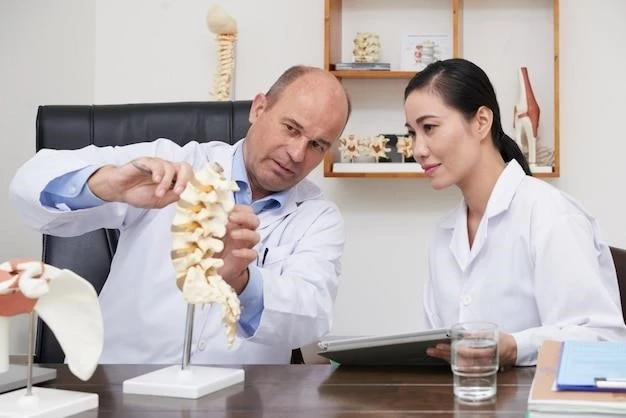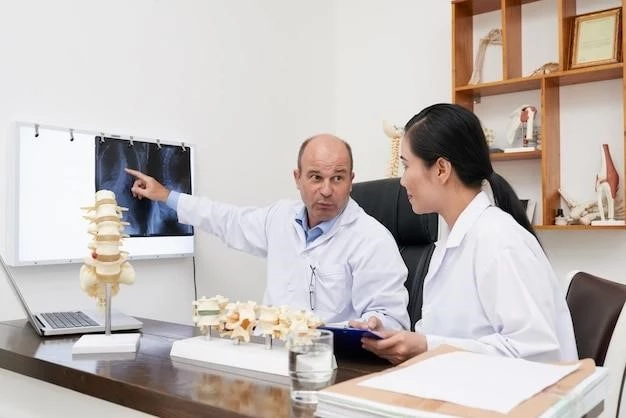Article Plan⁚ Disease ー Synovial Osteochondromatosis

Introduction to Synovial Osteochondromatosis
Synovial osteochondromatosis‚ also known as synovial chondromatosis‚ is a benign condition where cartilage develops in the synovial membrane of joints. This rare condition involves the formation of cartilaginous or osteocartilaginous nodules within a joint‚ bursa‚ or tendon sheath. It may lead to early osteoarthritis‚ decreased range of motion‚ and pain. The exact cause of this condition remains unknown‚ and it can affect various joints like the knees‚ hips‚ shoulders‚ and hands.
Causes and Risk Factors
Synovial osteochondromatosis is a rare‚ benign condition with an unclear etiology. It is characterized by the development of cartilaginous or osteocartilaginous nodules within the synovial membrane of joints. While the exact cause remains unknown‚ some theories suggest metaplasia of the synovial lining or genetic predisposition. Factors like trauma‚ osteochondral dissecans‚ osteoarthritis‚ and fractures can also contribute to secondary synovial osteochondromatosis. The condition may lead to painful joint effusions and mechanical issues due to the formation of loose bodies within the joint cavity.
Symptoms and Clinical Presentation
Synovial osteochondromatosis can lead to symptoms such as joint pain‚ swelling‚ and stiffness. Patients may also experience a decreased range of motion due to the presence of loose bodies within the joint. In some cases‚ patients may feel clicking or locking sensations in the affected joint. The condition can cause discomfort and potentially impact the quality of life of individuals affected by it.
Diagnosis and Differential Diagnosis
Diagnosing synovial osteochondromatosis often involves imaging studies like X-rays‚ MRI‚ or CT scans to visualize the presence of loose bodies within the joint. Biopsy may be required to confirm the diagnosis through the examination of the affected tissue. Differential diagnosis includes conditions like pigmented villonodular synovitis and degenerative joint diseases‚ as the symptoms may overlap. It is crucial for healthcare providers to differentiate synovial osteochondromatosis from other joint disorders to provide appropriate treatment.
Stages and Progression of the Disease
Synovial osteochondromatosis progresses through distinct stages. In primary synovial chondromatosis‚ the initial phase involves active synovitis without loose bodies‚ followed by the development and detachment of chondral or osteochondral nodules‚ ultimately forming loose bodies within the joint. These loose bodies can be calcified or ossified. Understanding the stages of the disease is crucial for appropriate management and treatment approaches.
Treatment Options
Synovial osteochondromatosis‚ also known as synovial chondromatosis‚ is a benign condition that involves the proliferation of the synovial membrane‚ leading to the formation of cartilaginous or osteocartilaginous nodules within joints. This rare disease can affect various large joints and lead to debilitating symptoms if left untreated. Understanding the causes‚ progression‚ and impact of synovial osteochondromatosis is essential for proper management and treatment of affected individuals.
Surgical Interventions
Surgical interventions for synovial osteochondromatosis may involve procedures like arthroscopic removal of loose bodies‚ synovectomy (partial or total)‚ and joint debridement to alleviate symptoms and complications associated with the condition. In cases where conservative treatments are ineffective‚ surgical excision of the nodules or affected synovium may be necessary to improve joint function and reduce pain. Close monitoring and follow-up post-surgery are essential to assess the effectiveness of the intervention and address any potential complications.

Prognosis and Complications
The prognosis for synovial osteochondromatosis is generally good with appropriate management. However‚ if left untreated‚ the condition can lead to complications such as joint damage‚ osteoarthritis‚ and decreased mobility. Surgical interventions can help alleviate symptoms and improve the quality of life for individuals affected by synovial osteochondromatosis. Close monitoring and follow-up care are essential to address any potential long-term complications.
Research and Advancements
Research on synovial osteochondromatosis focuses on understanding the underlying mechanisms of this rare condition‚ including the pathophysiology‚ genetic factors‚ and potential biomarkers for diagnosis. Advances in imaging techniques like MRI and CT scans have improved the accuracy of diagnosing synovial osteochondromatosis. Ongoing studies aim to explore novel treatment modalities‚ such as targeted therapies and minimally invasive surgical techniques‚ to enhance patient outcomes and reduce the recurrence rates of this condition.
Conclusion
In conclusion‚ synovial osteochondromatosis is a rare benign condition characterized by the proliferation of cartilaginous or osteocartilaginous nodules within the synovial membrane of joints. While the exact cause remains unclear‚ advancements in imaging techniques and research have improved diagnosis accuracy and treatment options for this condition. Surgical interventions play a crucial role in managing synovial osteochondromatosis‚ aiming to alleviate symptoms and prevent complications. With ongoing research and advancements‚ the prognosis for individuals with synovial osteochondromatosis continues to improve‚ highlighting the importance of early detection and comprehensive care.
